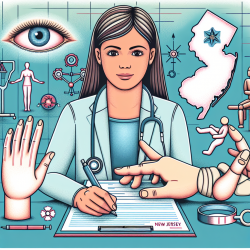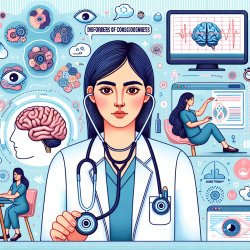Introduction
The COVID-19 pandemic has transformed the educational landscape, pushing students into a digital world where online learning has become the norm. This shift has brought about significant challenges, particularly concerning the mental health of adolescents. A recent study conducted in Bangladesh sheds light on the association between problematic internet use (PIU) and depressive symptoms among school-going adolescents during the pandemic. This blog will explore the study's findings and discuss how practitioners can use this information to enhance their practice and support the mental well-being of children.
Understanding the Study
The study, titled "Problematic Internet Use and Depressive Symptoms Among the School-Going Adolescents in Bangladesh During the COVID-19 Pandemic: A Cross-Sectional Study Findings," aimed to assess the impact of the pandemic on PIU and depressive symptoms in adolescents. Conducted among 491 adolescents aged 10 to 16, the study utilized self-administered questionnaires to gather data on sociodemographic factors and internet usage patterns. The prevalence of PIU and depressive symptoms was measured using the PIU questionnaire (PIUQ-SF-6) and the Patient Health Questionnaire-9 (PHQ-9).
Key Findings
- The study found that 80.04% of adolescents were at risk of PIU, while 77.80% experienced depressive symptoms.
- Factors such as age, education level, medium of education, financial status, and internet connection were significantly associated with PIU.
- Adolescents aged 14-16 were more vulnerable, with 84.55% experiencing depressive symptoms and 87.28% facing PIU issues.
- Female students were more affected than males, with nearly 60% reporting depressive symptoms and PIU.
- Students in the Bangla medium of education and those from middle economic backgrounds were more prone to these issues.
Implications for Practitioners
Practitioners can leverage these findings to better support adolescents during these challenging times. Here are some strategies to consider:
- Targeted Interventions: Develop interventions that address the specific needs of adolescents based on their sociodemographic profile and internet usage patterns. Tailor programs to focus on reducing PIU and supporting mental health.
- Enhanced Monitoring: Implement regular monitoring of internet usage among adolescents to identify those at risk of PIU. Use this data to provide timely support and intervention.
- Collaborative Efforts: Work with schools, parents, and mental health professionals to create a supportive environment that encourages healthy internet use and addresses mental health concerns.
- Education and Awareness: Educate adolescents and their families about the risks of PIU and the importance of maintaining a balanced lifestyle. Promote activities that reduce screen time and encourage physical and social engagement.
Encouraging Further Research
The study highlights the need for ongoing research to understand the long-term effects of PIU and depressive symptoms in adolescents. Practitioners are encouraged to contribute to this field by conducting further studies and sharing their findings. Collaborative research efforts can lead to the development of comprehensive intervention strategies that effectively address these issues.
Conclusion
The COVID-19 pandemic has underscored the importance of addressing mental health challenges among adolescents. By understanding the factors contributing to PIU and depressive symptoms, practitioners can develop targeted interventions that support the well-being of young individuals. To read the original research paper, please follow this link: Problematic internet use and depressive symptoms among the school-going adolescents in Bangladesh during the COVID-19 pandemic: A cross-sectional study findings.










